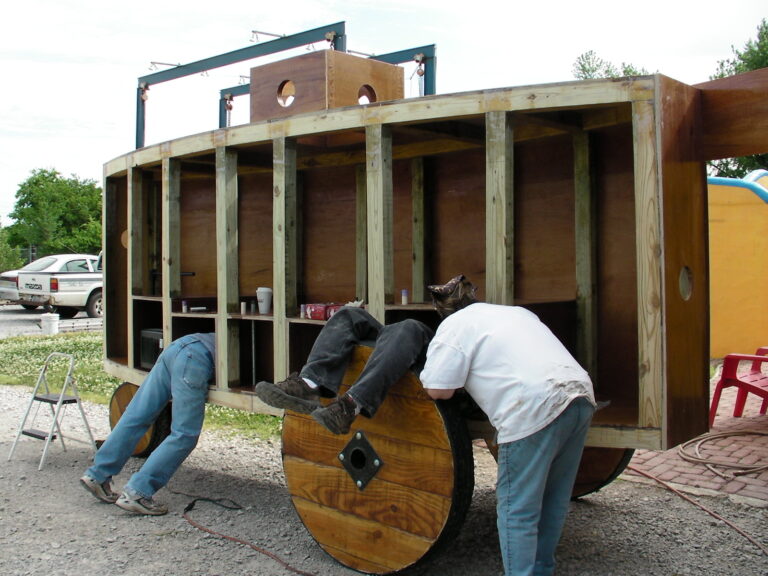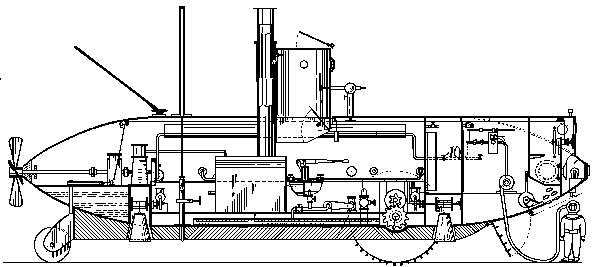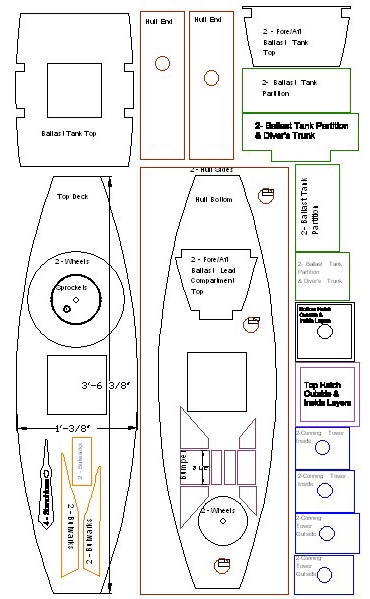
“Jules Verne was in a sense the director-general of my life. When I was not more than ten or eleven years old I read his Twenty Thousand Leagues under the Sea and my young imagination was fired. This generation may have forgotten that Verne was a great scientist as well as the writer of the most romantic fiction of his day. I began to dream of making voyages under the waters, and of the vast stores of treasure and the superb adventures that awaited subaqueous pioneers. But with the impudence which is a part of the equipment of the totally inexperienced I found fault with some features of Jules Verne’s Nautilus and set about improving on them.”
So began Lake’s passion for submarines and it was during his childhood that he planned his Argonaut submarine. While planning and designing his submarine at night, Lake grew up and worked with his father, who had a foundry.
Simon Lake married Margaret Vogel who was supportive of Lake’s dream of building a submarine. By this time, the true difficulties of submarine development were not lost on Simon Lake. A childhood fancy had developed into exhausting research on how to overcome the issues with submerging a vessel.
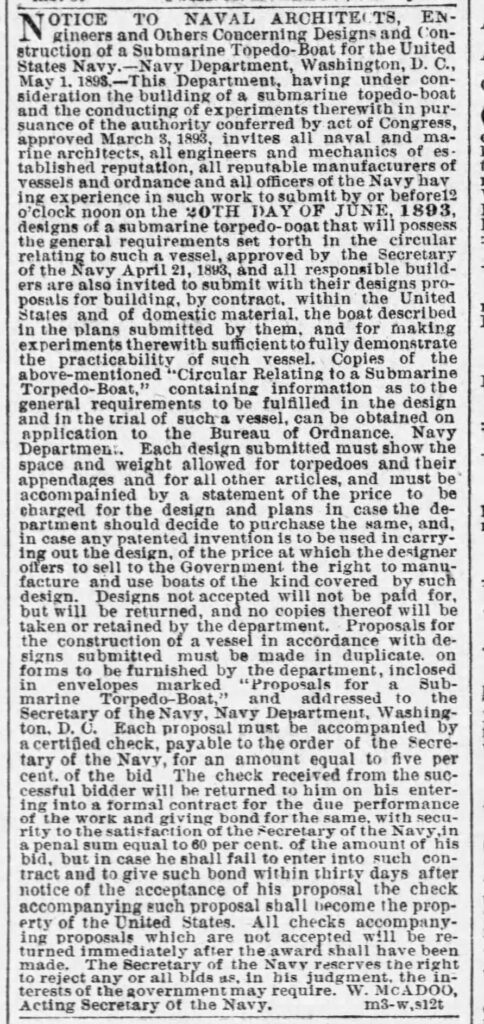
In 1892, Simon Lake’s wife found the advertisement about the bids for a submarine from the U.S. Navy. At the young age of twenty-seven, he set off to Washington D.C. to submit his plans. He was the youngest of the inventors and was not considered a threat to the other inventors.
“I was confident that my plans were superior to those of the Holland and Baker submarine. Every inventor presumably feels that way. I could name several points of superiority. It seemed to me, too, in my almost infantile ignorance of how things are done in politics that my proposition would appeal to the chiefs in the Navy Department. I had not submitted a bid for the construction of a boat, for the very good reason that I had neither money nor backers, but I had asked that, if my plans were accepted, I be given a position in the capacity of constructor and my boat be built in one of the Navy’s yards. It seemed to me that this suggestion was both practical and a promise of economy. What I did not know was that there was the smell of business in the building of submarines. Let me emphasize that this statement is not necessarily critical. The Mends of Mr. Baker and Mr. Holland, one or both, had aroused interest in submarines among members of Congress. An appropriation of $200,000 was made, and it was the very natural feeling of those who had put this appropriation through that Baker and Holland were entitled to the first chance at it.”
Lake’s design gave the submarine the ability to submerge on an even keel, a diving compartment, five propellers, a double hull and wheels so the submarine could be operated on the ocean floor. The competition, unfortunately for Lake, was hinged by political influence, bickering and bureaucratic delay. It wasn’t until years later that he found out the truth about why his design wasn’t accepted. Lake met with Admiral Baird, who had been a member on the board at the time. The two men had the following conversation:
Baird: “Lake, I’m glad to meet you. We should have been building your boats all the time. Four of the five members of the Board voted for your plans in 1893, you know.”
Lake: “Then why didn’t you build my boats?”
Baird: “Because the Navy’s advertisement had required that a bid be submitted for the construction of a submarine. You made no such bid. Four of us wanted to call you over to the Navy Yard and have you make up working drawings. Then we could build in one of the Navy’s yards under your supervision. But they beat us.”
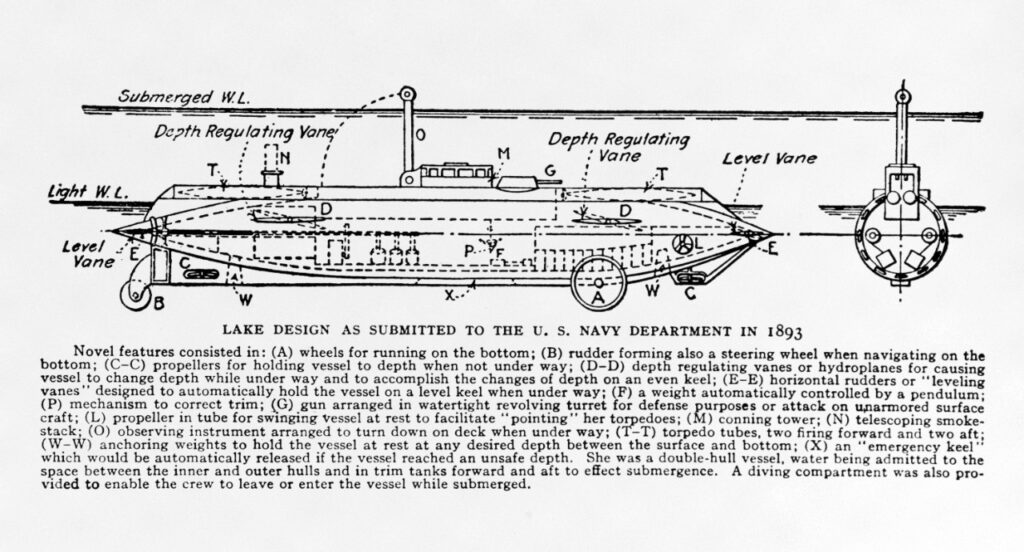
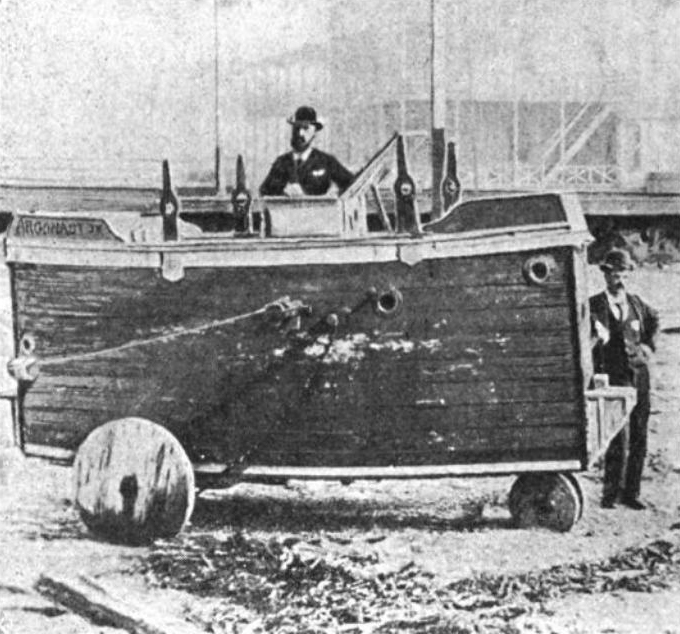
Not to be deterred, Simon Lake built a small submarine, the Argonaut Jr. in 1894 and in 1895 created the Lake Submarine Company. By 1898 Lake had completed the 60′ Argonaut and successfully maneuvered more than 1,000 miles up the eastern coast with a 30 HP gasoline engine.
As for the designs of contest winner, JP Holland, his 1896 Plunger never worked properly and was abandoned. It wasn’t until 1900, Holland finally had his first successful dockside trial of his ‘porpoising’ Holland VI submarine. This type of positive buoyancy submarine would soon be dropped in favor of the Lake’s designs.

